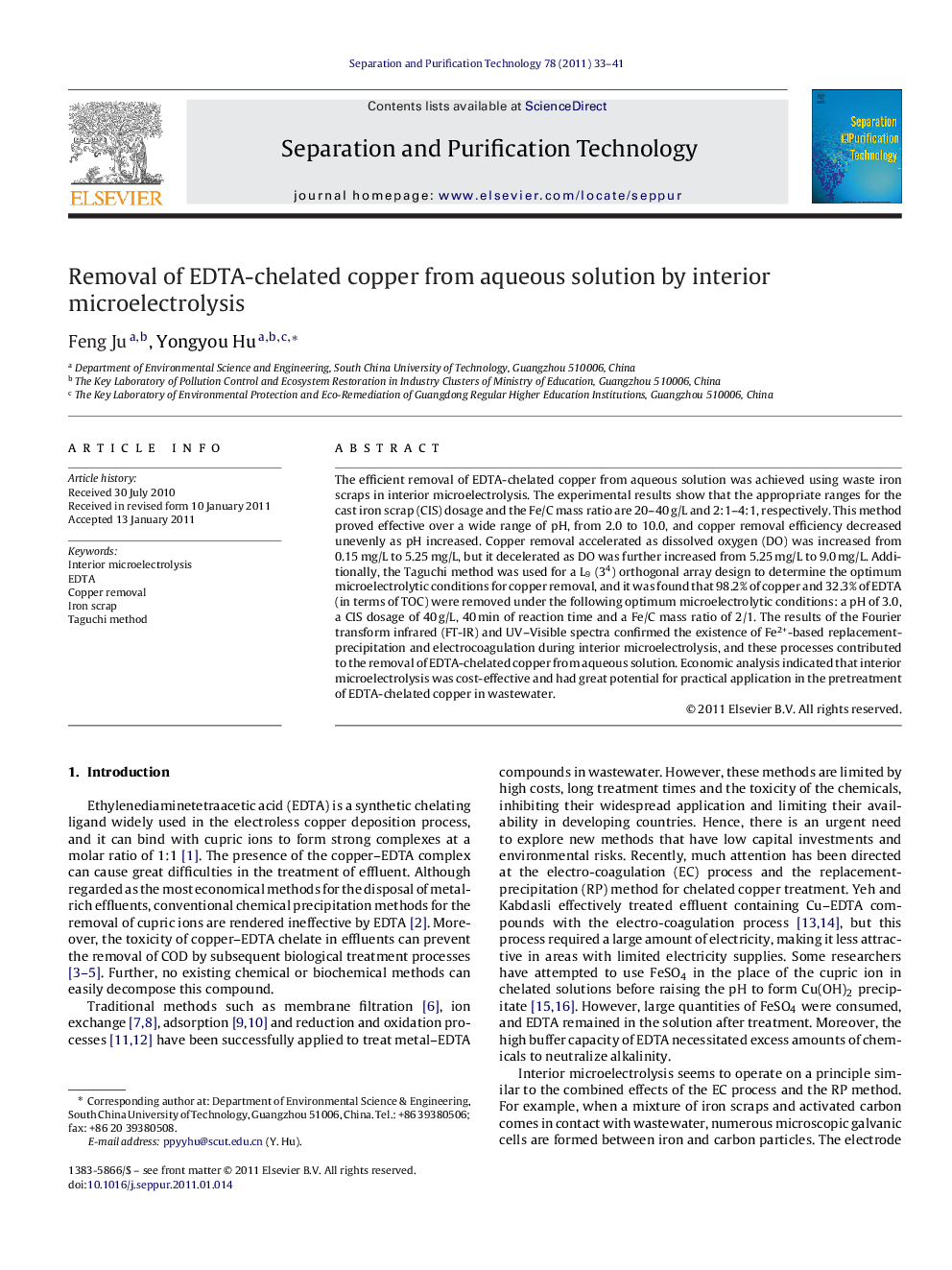| Article ID | Journal | Published Year | Pages | File Type |
|---|---|---|---|---|
| 642662 | Separation and Purification Technology | 2011 | 9 Pages |
The efficient removal of EDTA-chelated copper from aqueous solution was achieved using waste iron scraps in interior microelectrolysis. The experimental results show that the appropriate ranges for the cast iron scrap (CIS) dosage and the Fe/C mass ratio are 20–40 g/L and 2:1–4:1, respectively. This method proved effective over a wide range of pH, from 2.0 to 10.0, and copper removal efficiency decreased unevenly as pH increased. Copper removal accelerated as dissolved oxygen (DO) was increased from 0.15 mg/L to 5.25 mg/L, but it decelerated as DO was further increased from 5.25 mg/L to 9.0 mg/L. Additionally, the Taguchi method was used for a L9 (34) orthogonal array design to determine the optimum microelectrolytic conditions for copper removal, and it was found that 98.2% of copper and 32.3% of EDTA (in terms of TOC) were removed under the following optimum microelectrolytic conditions: a pH of 3.0, a CIS dosage of 40 g/L, 40 min of reaction time and a Fe/C mass ratio of 2/1. The results of the Fourier transform infrared (FT-IR) and UV–Visible spectra confirmed the existence of Fe2+-based replacement-precipitation and electrocoagulation during interior microelectrolysis, and these processes contributed to the removal of EDTA-chelated copper from aqueous solution. Economic analysis indicated that interior microelectrolysis was cost-effective and had great potential for practical application in the pretreatment of EDTA-chelated copper in wastewater.
Research highlights► Interior microelectrolysis effectively removes EDTA-chelated copper. ► Copper removal is mainly influenced by solution pH, DO and Fe/C mass ratio. ► Optimum conditions are determined by orthogonal array L9(34) using Taguchi method. ► Fe2+-based effects attribute to copper removal from EDTA-chelated solution. ► Interior microelectrolysis is efficient and cost-effective.
